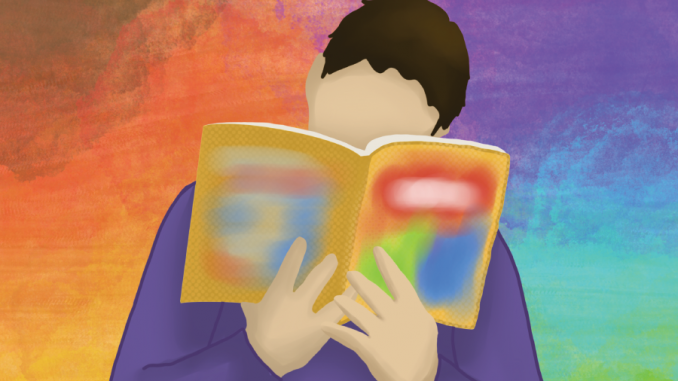
One of the first comic books I read was “X-Men: God Loves, Man Kills.”
In the Marvel universe, mutants are a group of people who are born with an X-Gene that gives them superpowers, and they’re primarily featured in the X-Men line of comics. But because they are born different, they are hated and feared by normal humans and sometimes even by other superheroes.
In 1975, writer Chris Claremont took over the X-Men franchise and turned the mutants into a metaphor for real-life minority groups. In 1982, Claremont, along with artist Brent Anderson, wrote the seminal graphic novel, “X-Men: God Loves, Man Kills,” and brought the metaphor to the forefront of the franchise.
The main villain is William Stryker, a conservative televangelist who preaches hate against mutants and feels the need to keep the human race pure. The X-Men, being mutants, disagree with Stryker and try to get him to see reason. It doesn’t work, but Stryker and his followers are dealt a temporary blow by the end of the comic and the X-Men reaffirm their own humanity.
Is it any wonder that I was drawn to them? The X-Men have had queer subtext for decades but could never fully express it on page due to censorship from higher-ups or outside regulatory bodies like the Comics Code Authority, which served a similar purpose to the Motion Picture Association and approved comic books for general audiences from 1954 to 2011. For decades, the Comics Code Authority forbade any mention of homosexuality and only changed the rules on that front in 1989, restricting writers to leaving subtle hints about a character’s real sexual orientation.
The X-Men have been fighting bigotry, metaphorically and literally, for decades. They stand for equality and resist the notion that they are less human or freaks of nature. And as society has become more accepting of LGBTQ people, more and more X-Men have come out of the closet, starting with Northstar in 1992.
Prior to Northstar’s coming out, there were no other mainstream superheroes who had declared their sexuality on the page, despite the loosening of the rules years earlier. Everything else was subtext, the comic book version of being in the closet.
Some superheroes who have had LGBTQ subtext have gotten to come out, so to speak, as LGBTQ in text. Kitty Pryde has been hinted to be in love with her best friends and teammates Illyana Rasputina and Rachel Grey and fans speculated about her sexual orientation for years.
Pryde finally kissed another girl in the “Marauders” issue #12, published in September 2020, confirming that she is not straight.
But more often than not, writers are still reluctant to make characters explicitly gay in order to avoid alienating the straight audience and wind up queerbaiting LGBTQ readers as a sort of messed-up and unfair compromise.
Queerbait, subtext’s evil cousin, is when writers tease LGBTQ content in order to draw LGBTQ audiences in but never follow through in order to avoid alienating cisgender and heterosexual audiences. This is incredibly frustrating because there’s no good reason for queerbait.
I came out to my parents as transgender in my senior year of high school. They read my heartfelt coming out letter, told me they would love and accept me no matter what, and then ignored my gender identity, chosen name and preferred pronouns until my sophomore year of college.
I still get misgendered at home by my parents. My extended family has put no effort into learning my new name or using the correct pronouns, and I don’t know if my parents even bother to correct them when I’m not around. I can’t talk to them about the way they treat me without my mother bursting into tears and making the situation about herself.
Each time a character gets to come out of the closet and fans embrace them, it’s a small victory, a reminder that even though my coming out didn’t go so well, there is still hope for others.
But more often than not, the subtext goes nowhere and morphs into queerbait.
My identity is not a marketing gimmick. Comic book companies need to stop playing around and actually deliver LGBTQ content. LGBTQ people read comic books and we deserve to be treated with respect.


Out of curiosity have you read X-Factor? Or Young Avengers, or Runaways? America. Loki Agent of Asgard. Because between Marvel and DC, there are a plethora of various explicitly queer characters that exist. Bobby Drake was revealed to be gay is not the best-written thing in the world. But that is still a fact that exists. I think Marvel and comic publishers, in general, are reluctant to make widespread retcons like this because of the backlash you described. But that doesn’t mean there aren’t a lot of queer characters that do exist. They are not widely represented, there is a serious lack of representation outside of the LG & B in mainstream comics.
But indie comics, webcomics, and graphic novels are a pool of great representation that delves into all different types of queer stories.
The issue of the early X-men Comics is that Claremont COULDN’t includes explicitly queer content even when he wanted to. There was a lot of homophobia not just from the CCA, but because of edicts from the editors like Jim Shooter. I think its unfair to blame Claremont and early writers of queerbaiting when their intention was to create queerness where they could given the restrictions they had in place.
Aren’t you a bit old for comic books?